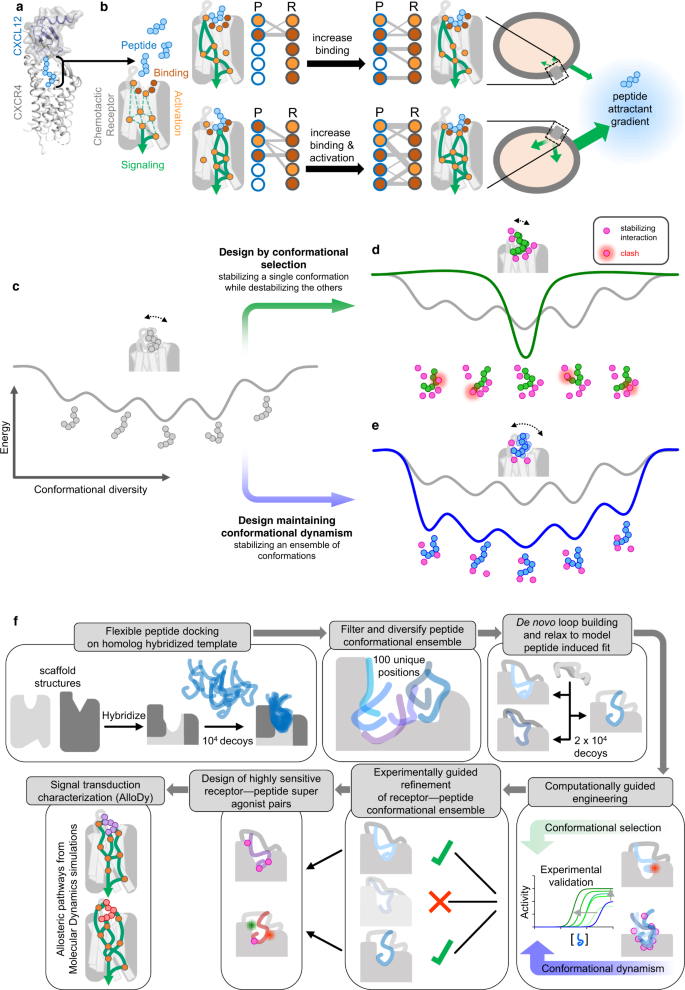2023-05-24 スイス連邦工科大学ローザンヌ校(EPFL)
◆EPFLの研究者は、新しい計算アプローチを開発し、形状と機能を動的に変化させることができるタンパク質複合体を設計しました。この新しいバイオセンサーは柔軟な化合物を検知し、複雑な細胞応答を引き起こすことができます。さらに、研究者は人工受容体を設計するための新たな方法を提案し、治療目的に幅広く応用できる可能性があります。
◆この研究は、タンパク質結合と細胞工学の設計における重要な進展であり、細胞プロセスをより正確に制御する新しい合成細胞生物学のツールを提供するものです。
<関連情報>
- https://actu.epfl.ch/news/designing-synthetic-receptors-for-precise-cell-con/
- https://www.nature.com/articles/s41467-023-38491-9
化学走性を応用した動的受容体-ペプチドシグナル伝達複合体の計算機による設計 Computational design of dynamic receptor—peptide signaling complexes applied to chemotaxis
Robert E. Jefferson,Aurélien Oggier,Andreas Füglistaler,Nicolas Camviel,Mahdi Hijazi,Ana Rico Villarreal,Caroline Arber & Patrick Barth
Nature Communications Published:19 May 2023
DOI:https://doi.org/10.1038/s41467-023-38491-9

Abstract
Engineering protein biosensors that sensitively respond to specific biomolecules by triggering precise cellular responses is a major goal of diagnostics and synthetic cell biology. Previous biosensor designs have largely relied on binding structurally well-defined molecules. In contrast, approaches that couple the sensing of flexible compounds to intended cellular responses would greatly expand potential biosensor applications. Here, to address these challenges, we develop a computational strategy for designing signaling complexes between conformationally dynamic proteins and peptides. To demonstrate the power of the approach, we create ultrasensitive chemotactic receptor—peptide pairs capable of eliciting potent signaling responses and strong chemotaxis in primary human T cells. Unlike traditional approaches that engineer static binding complexes, our dynamic structure design strategy optimizes contacts with multiple binding and allosteric sites accessible through dynamic conformational ensembles to achieve strongly enhanced signaling efficacy and potency. Our study suggests that a conformationally adaptable binding interface coupled to a robust allosteric transmission region is a key evolutionary determinant of peptidergic GPCR signaling systems. The approach lays a foundation for designing peptide-sensing receptors and signaling peptide ligands for basic and therapeutic applications.


